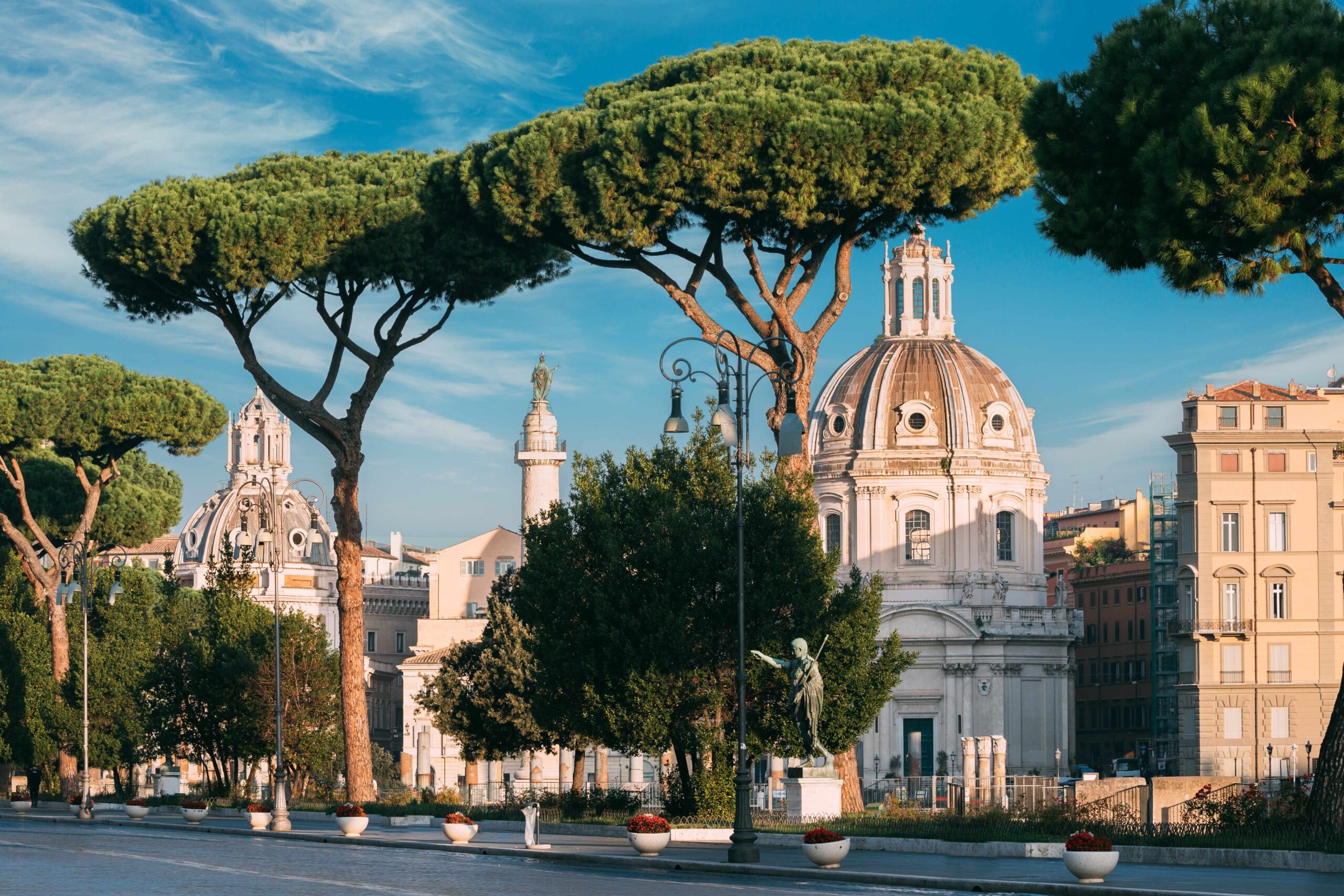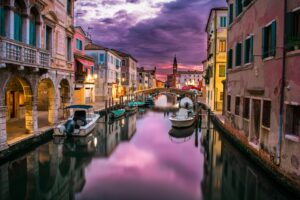Rome, the Eternal City, is a timeless blend of ancient history, artistic treasures, and modern Italian charm. From the Colosseum to the Vatican, its allure is unmatched.
However, when to visit Rome depends on your interests, be it mild weather, fewer crowds, or seasonal festivals.
Each season offers unique experiences, so let’s delve into the best times to explore this iconic city and uncover Rome’s secrets.
🏖️ Year-Round Mediterranean Climate in Rome
Rome enjoys a Mediterranean climate, making it a destination you can visit any time of year. While summers are hot and winters are mild, spring and fall are especially delightful with comfortable weather and fewer crowds.
Here’s an overview of Rome’s weather year-round:
- Winter (December–February): Expect mild days (40°F–55°F / 5°C–13°C) with the occasional rainy spell. It’s the perfect time for quiet, crowd-free visits to landmarks like the Vatican and Pantheon. December transforms the city into a festive wonderland with Christmas lights, markets, and elaborate Nativity scenes.
- Spring (March–May): Rome’s parks and gardens bloom, and temperatures climb to a comfortable 60°F–75°F (15°C–24°C). The city buzzes with life, making it ideal for outdoor sightseeing and leisurely strolls through piazzas.
- Summer (June–August): Prepare for high temperatures (85°F–95°F / 29°C–35°C). While popular attractions like the Colosseum are busy, summer festivals and extended hours at landmarks make this a lively and exciting time to visit.
- Autumn (September–November): The city dons its golden hues, and temperatures hover between 65°F–80°F (18°C–27°C). This season is perfect for taking scenic walks and enjoying seasonal delicacies like chestnuts and truffles.

🌸 Spring (March to May): The Perfect Season for Mild Weather and Blossoming Beauty
Spring is often regarded as the best time to visit Rome. The city wakes from its winter slumber with blooming gardens, lively piazzas, and comfortably warm weather. Daytime temperatures range from 55°F (13°C) in March to 75°F (24°C) in May, making it perfect for walking through ancient ruins or savoring gelato by the Trevi Fountain.
Why Visit in Spring?
- Perfect Weather: With sunny days and cool evenings, you can explore the city without the sweltering heat of summer.
- Fewer Crowds (Early Spring): March and April see fewer tourists compared to peak summer months, though Easter can bring some crowds due to Vatican events.
- Nature in Bloom: Rome’s parks, like Villa Borghese, and gardens, such as the Roseto Comunale (Municipal Rose Garden), are at their most vibrant.
Highlights
- Easter Celebrations: The Vatican hosts grand Easter events, including a Papal Mass in St. Peter’s Basilica, drawing pilgrims worldwide.
- Trastevere’s Streets: Spring is ideal for exploring Trastevere’s cobblestone streets, enjoying outdoor cafes, and soaking in the atmosphere of this charming neighborhood.
- Outdoor Museums: The Roman Forum, Palatine Hill, and Colosseum are especially delightful in mild weather.
🌞 Summer (June to August): Rome at Its Liveliest
Summer in Rome is synonymous with long days, bustling piazzas, and a vibrant energy that fills the city. While daytime temperatures can soar to 85–95°F (29–35°C), summer remains popular due to the cultural festivals and extended sightseeing hours. Expect higher prices and larger crowds, especially in July and August.
Why Visit in Summer?
- Extended Hours: Many museums and archaeological sites offer extended hours, including night tours at landmarks like the Colosseum.
- Festivals Galore: Rome comes alive with events such as the Estate Romana (Roman Summer Festival), featuring open-air concerts, movie screenings, and cultural performances.
- Vibrant Nightlife: The city’s nightlife thrives in summer, with pop-up bars and restaurants along the Tiber River.
Challenges
- Heat and Crowds: The heat can be intense, especially in August. Combine this with large crowds, and it may feel overwhelming for some travelers.
- Local Vacations: Many Romans leave the city during August’s Ferragosto holiday, causing some businesses and restaurants to close.
Pro Tips
- Early Mornings or Evenings: Sightseeing early in the morning or during the evening can help you beat both the heat and the crowds.
- Hydrate and Rest: Carry water and plan breaks in shaded areas or air-conditioned museums like the Vatican Museums.
🍂 Autumn (September to November): Golden Light and Cultural Delights
Autumn is a magical time in Rome, offering a perfect balance of pleasant weather, fewer crowds, and seasonal events. September often still feels like summer, with temperatures around 80°F (27°C), but by November, they cool to a crisp 60°F (15°C).
Why Visit in Autumn?
- Milder Weather: Cooler than summer but still warm enough for outdoor dining and sightseeing.
- Cultural Events: September and October host events like the Roma Europa Festival, showcasing contemporary music, dance, and theater.
- Seasonal Cuisine: Autumn is a great time to savor local specialties like fresh truffles, porcini mushrooms, and hearty pasta dishes.
Highlights
- Golden Hour in Rome: Autumn’s soft sunlight makes iconic landmarks like the Pantheon and the Spanish Steps even more photogenic.
- Wine Harvest Season: While vineyards aren’t in Rome itself, many nearby areas host wine festivals during harvest season. Consider a day trip to Frascati or Castelli Romani for wine tastings.
- Villa Borghese: Stroll through this expansive park under the canopy of autumn leaves for a tranquil escape from the bustling city.
❄️ Winter (December to February): A Peaceful and Festive Rome
Winter in Rome is its quietest and most affordable season. While temperatures average 40–55°F (5–13°C), the atmosphere is cozy and welcoming, with festive lights and Christmas markets adding to the charm.
Why Visit in Winter?
- Fewer Crowds: Enjoy major attractions like the Sistine Chapel or the Colosseum without the usual hustle and bustle.
- Festive Vibes: Rome sparkles with Christmas lights and Nativity displays, especially in St. Peter’s Square.
- Budget-Friendly: Flights and accommodations are more affordable during the winter months (except around Christmas and New Year).
Highlights
- Christmas in Rome: Visit the Vatican for Christmas Eve Mass or admire the giant Christmas tree in Piazza Venezia.
- Cozy Dining: Warm up with a traditional Roman meal like cacio e pepe or carciofi alla Romana (Roman-style artichokes) in a trattoria.
- Epiphany Celebrations: January 6th marks the Epiphany with parades and events like La Befana, a traditional Italian celebration featuring gift-giving.
📆 Monthly Breakdown: Finding the Right Month for You
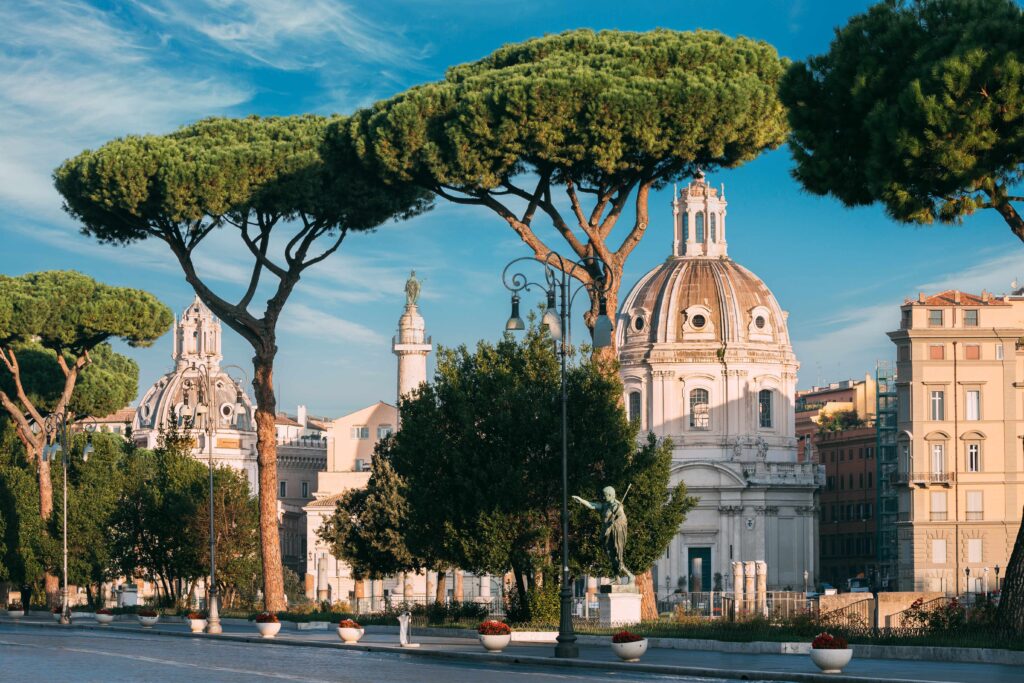
January & February: Quiet Charm
- Why Go? Experience Rome at its most serene, with short lines at major attractions and budget-friendly accommodations.
- Events: Celebrate Epiphany on January 6th or enjoy romantic Valentine’s Day strolls in Trastevere.
- Tips: Pack warm clothes for chilly mornings and evenings, and enjoy hearty winter dishes like pasta alla gricia or oxtail stew.
March – May: Blossoming Spring
- Why Go? The weather is ideal for sightseeing, and blooming flowers add a romantic touch to landmarks like the Spanish Steps and Villa Borghese gardens.
- Events: Easter celebrations draw thousands to St. Peter’s Basilica, while Rome’s birthday (April 21) features parades and historical reenactments.
- Tips: Book tickets for Easter events months in advance, as it’s one of the city’s busiest times.
June – August: Summer Buzz
- Why Go? Rome is alive with cultural festivals, open-air cinemas, and extended museum hours.
- Events: Estate Romana offers concerts, theater, and art exhibitions, while Ferragosto (August 15) celebrates the peak of summer.
- Tips: Sightsee early in the morning or late afternoon to avoid the midday heat, and cool off with refreshing gelato from Gelateria del Teatro.
September – November: Autumn Bliss
- Why Go? Golden light bathes the city, making it a photographer’s dream. The cooler weather is perfect for exploring ruins, gardens, and cobblestone streets.
- Events: Indulge in wine-tasting tours during harvest season or enjoy cultural events like the Roma Europa Festival in October.
- Tips: Take a food tour to sample seasonal favorites like porcini mushrooms, chestnuts, and truffles.
December: Festive Wonders
- Why Go? The holiday season transforms Rome into a magical destination with Christmas markets, festive lights, and New Year’s Eve celebrations.
- Events: Don’t miss Midnight Mass at St. Peter’s Basilica or fireworks at Piazza del Popolo.
- Tips: Dress warmly and book accommodations early to secure a spot during the busy festive period.
🌍 Best Time for Specific Activities
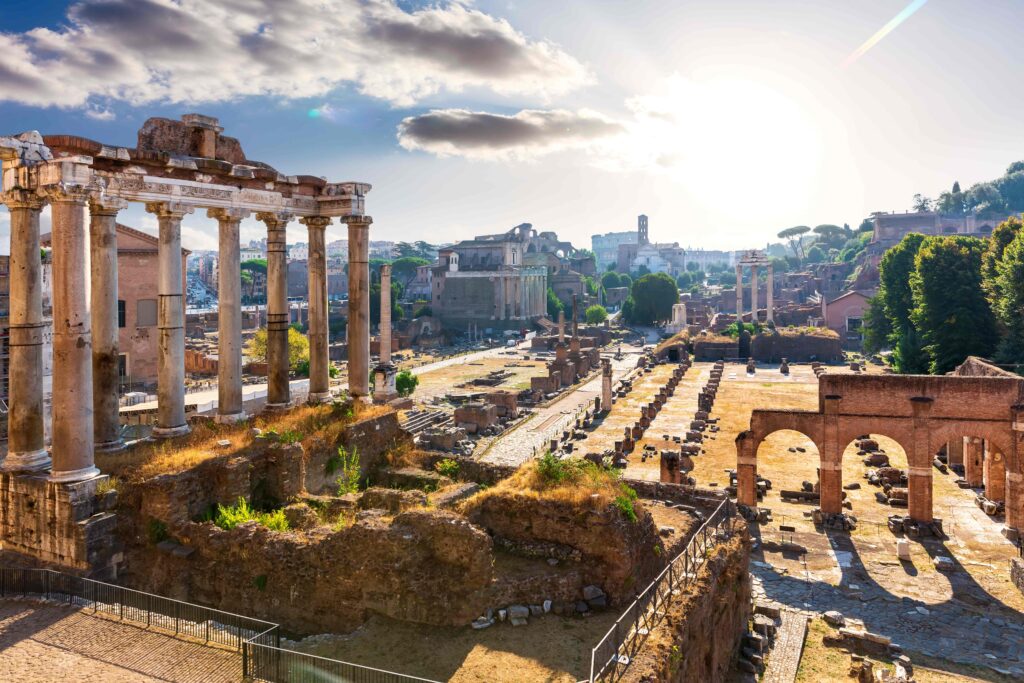
Best for Avoiding Crowds
Late winter (January–February) and early spring (March) are perfect for experiencing Rome’s major landmarks without the bustling crowds. Enjoy quieter streets and reduced wait times at the Colosseum, Vatican Museums, and Roman Forum.
Best for Festivals
- Easter Week (April): Expect grand processions, religious ceremonies, and lively street markets.
- Ferragosto (August 15): A national holiday celebrating summer with fireworks, concerts, and feasts.
- Rome Film Festival (October): A star-studded event for movie lovers held at the Auditorium Parco della Musica.
Best for Photography
Autumn’s golden light and soft shadows create stunning backdrops for photos of iconic landmarks like the Trevi Fountain and Piazza Navona. Early morning and late afternoon are the best times to capture Rome’s timeless beauty.
Best for Food Lovers
Each season in Rome offers a distinct culinary experience:
- Spring: Fresh artichokes and Roman-style fava beans.
- Summer: Light dishes like insalata caprese and refreshing granita.
- Autumn: Porcini mushrooms, truffles, and hearty pasta dishes like amatriciana.
- Winter: Warming meals such as polenta with sausages and roasted chestnuts sold by street vendors.
🎒 Packing Tips for Rome
Packing wisely for your trip to Rome can make all the difference in how comfortable and prepared you feel as you explore the Eternal City.
Here’s a detailed, season-by-season breakdown of what to include in your suitcase to ensure you’re ready for anything Rome’s Mediterranean climate throws your way.
Spring and Autumn: Versatile Layers and Comfort
Rome’s spring (March–May) and autumn (September–November) weather can shift between sunny afternoons and cooler mornings or evenings, so layering is key.
- Clothing: Pack light sweaters, long-sleeved tops, and comfortable jeans or trousers. A light jacket or cardigan is perfect for crisp mornings or breezy evenings.
- Shoes: Bring sturdy, comfortable walking shoes or sneakers, as Rome’s cobblestone streets can be uneven and hard on your feet after a long day of sightseeing.
- Extras: A compact travel umbrella or lightweight rain jacket is useful, as sudden showers are common, especially in spring. Don’t forget a small day bag to carry essentials as you wander through ancient ruins or relax in piazzas.
Summer: Stay Cool and Sun-Safe
Rome’s summer (June–August) can get hot and humid, with temperatures often reaching 85°F–95°F (29°C–35°C). Staying comfortable and protected is a priority.
- Clothing: Lightweight, breathable fabrics like cotton or linen are ideal. Opt for loose-fitting shorts, skirts, and dresses that help you stay cool.
- Footwear: Sandals or open-toed shoes with good support are great for the heat, but ensure they’re comfortable for long walks.
- Accessories:
- Sunglasses and a wide-brimmed hat to shield yourself from the strong sun.
- Sunscreen with a high SPF to prevent sunburn during long days outdoors.
- Reusable water bottle: Take advantage of Rome’s famous nasoni fountains, which provide free, clean drinking water across the city.
- Cooling towel or fan: These are lifesavers for staying refreshed during midday heat.
Winter: Cozy and Weather-Resistant
Rome’s winters (December–February) are mild compared to northern Europe, but temperatures can dip to 40°F–55°F (5°C–13°C), and rain is more frequent.
- Clothing: Layer up with warm sweaters, long coats, and thermal tops. A scarf, gloves, and a beanie can keep you warm during chilly morning strolls or nighttime sightseeing.
- Shoes: Waterproof boots or sneakers are essential to keep your feet dry on rainy days. Choose ones with good grip for navigating slick cobblestones.
- Outerwear: A waterproof jacket or a compact travel raincoat ensures you stay dry while exploring. Consider a packable down jacket for added warmth without bulk.
- Extras: A compact umbrella and quick-dry socks are great for sudden downpours. Keep a small thermos handy if you enjoy sipping hot coffee or tea while walking the streets.
Year-Round Essentials
Certain items are must-haves no matter the season:
- Day Bag: A lightweight backpack or crossbody bag with secure zippers for your wallet, camera, and snacks.
- Comfortable Shoes: Rome’s cobblestones can be unforgiving, so even in summer, make comfort a priority.
- Power Adapter: Italy uses type C or F plugs with 230V; bring a universal travel adapter to charge your devices.
- Guidebook or Offline Map: Rome’s winding streets can be a maze. Download maps or carry a compact guide to navigate more easily.
- Reusable Shopping Bag: Handy for impromptu market purchases or souvenirs.
- Portable Charger: Long sightseeing days can drain your phone’s battery, especially if you’re snapping photos of every picturesque piazza.
By packing thoughtfully and adapting your wardrobe to Rome’s seasonal needs, you’ll be ready to explore everything this iconic city has to offer, from the ancient Colosseum to the charming streets of Trastevere.
✨ Travel Recommendations for First-Time Visitors
- Plan Around Crowds: Spring (March-May) and fall (September-November) are perfect for enjoying Rome’s iconic landmarks without peak-season crowds.
- Purchase Tickets in Advance: Skip the lines at popular attractions like the Vatican Museums and Colosseum. Opt for guided tours to dive into Rome’s rich history.
- Explore Beyond the Tourist Spots: Visit lesser-known treasures like the Appian Way, Janiculum Hill, or Basilica di San Clemente for a quieter experience.
- Take Breaks: Rome is best explored on foot, so include frequent breaks to recharge at charming cafes or serene piazzas.
- Use Public Transport: The metro and bus system are convenient, but be prepared for delays. Walking is often the best way to discover the city.
- Dress Appropriately: Wear comfortable shoes for cobblestone streets. If visiting churches, bring a scarf or shawl to cover shoulders.
- Dining Etiquette: Italians eat dinner late (around 8–9 PM). If you’re hungry earlier, enjoy aperitivo—a pre-dinner ritual of drinks and light snacks.
- Mind the Dress Code: When visiting religious sites, ensure shoulders and knees are covered. A shawl or scarf is handy for such occasions.
- Comfortable Shoes Are a Must: Rome’s cobblestone streets demand sturdy footwear, especially if you’re exploring on foot.
🍽️ Seasonal Tips for Foodies
Rome is a paradise for culinary enthusiasts, with its seasonal dishes reflecting the bounty of the Italian countryside and a rich gastronomic tradition. As you explore the Eternal City, let the seasons guide your palate for an unforgettable culinary experience.
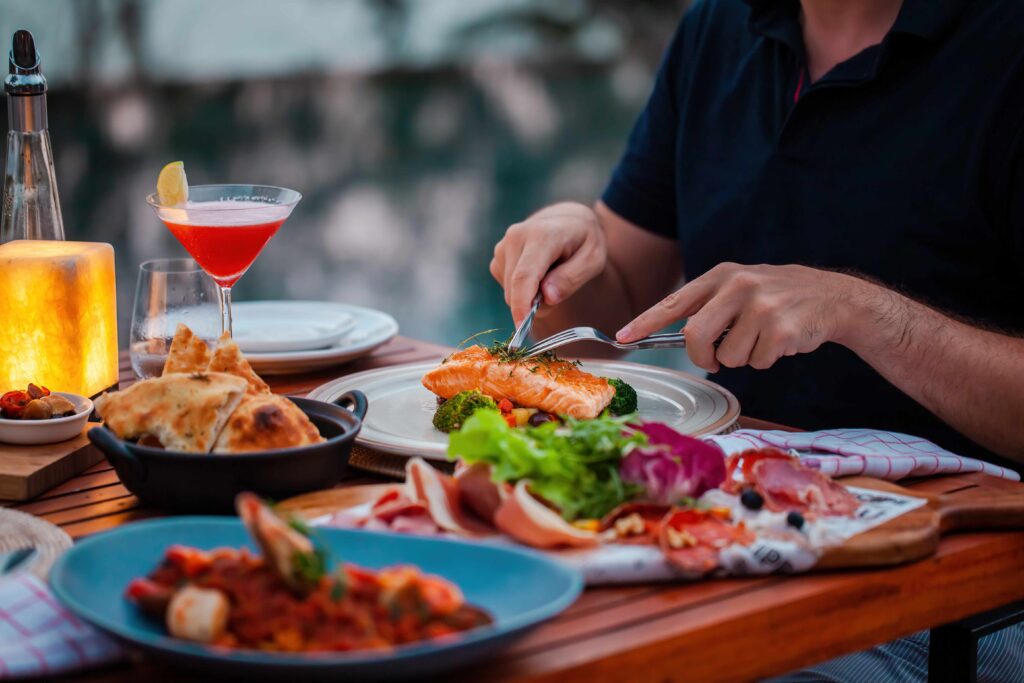
Spring: Fresh Flavors and Vibrant Produce
Spring (March–May) marks the arrival of fresh, green produce in Rome’s markets and trattorias. The city’s chefs embrace the season with dishes that highlight the earthy and delicate flavors of vegetables.
- Artichokes: Roman-style artichokes (carciofi alla romana) are a springtime favorite. These tender artichokes are stuffed with garlic and mint, then slow-cooked in olive oil and white wine. Try the crispy fried version (carciofi alla giudia), a Jewish-Roman specialty.
- Fava Beans: Often paired with pecorino cheese, fava beans (fave fresche) offer a quintessentially Roman snack or appetizer. This simple pairing celebrates spring’s fresh flavors.
- Asparagus and Peas: Look for pasta dishes featuring these vibrant spring vegetables, like fettuccine primavera or risotto agli asparagi.
Summer: Light and Refreshing Delights
Summer (June–August) brings the heat, and Rome’s cuisine shifts to lighter, refreshing dishes to keep you cool and energized.
- Gelato: No Roman summer is complete without indulging in gelato. Enjoy classic flavors like pistachio, hazelnut (nocciola), or creamy stracciatella. For a refreshing twist, try fruit-based sorbets like lemon or strawberry. Visit renowned gelaterias like Giolitti or Fatamorgana.
- Caprese Salad: Simple and elegant, this dish combines juicy tomatoes, fresh mozzarella, basil, and a drizzle of olive oil. It’s a refreshing appetizer perfect for hot days.
- Seasonal Pastas: Look out for light pasta dishes with zucchini blossoms (fiori di zucca), cherry tomatoes, and seafood. Spaghetti alle vongole (clams) is a summer staple.
- Street Food: Rome’s summer markets offer supplì (fried rice balls) and seasonal pizza al taglio (pizza by the slice) featuring fresh summer toppings like figs and prosciutto.
Autumn: Earthy and Hearty Delicacies
Autumn (September–November) is a food lover’s dream, as the season heralds rich and earthy ingredients like mushrooms, chestnuts, and truffles. The menus in Rome turn heartier, reflecting the cooler weather.
- Truffles: Indulge in dishes featuring truffles (tartufo), such as pasta with truffle shavings or truffle-infused risottos. Autumn is prime truffle season, and their earthy aroma elevates any dish.
- Chestnuts: Roasted chestnuts, sold by street vendors, are a quintessential autumn treat in Rome. Perfect for warming your hands as you stroll through the city.
- Pumpkin and Squash: You’ll find them in soups, risottos, or ravioli stuffed with creamy pumpkin and sage butter sauce.
- Wild Game: Autumn is also the time for hearty dishes like braised rabbit (coniglio) or wild boar ragu (cinghiale), often served with polenta or pasta.
Winter: Comfort Food and Roman Classics
Winter (December–February) in Rome calls for warm, satisfying meals that showcase the richness of Roman cuisine.
- Cacio e Pepe: This quintessential Roman dish combines thick pasta with Pecorino Romano cheese and freshly cracked black pepper for a creamy, comforting delight. Perfect for warming up on a chilly day.
- Saltimbocca alla Romana: Thin veal cutlets wrapped in prosciutto and sage, sautéed in butter and white wine, this dish is as indulgent as it is flavorful.
- Soups and Stews: Soups like minestrone or zuppa di ceci e castagne (chickpeas and chestnuts) offer hearty, warming options.
- Festive Treats: During the holidays, don’t miss panettone or torrone, sweet Italian confections that pair beautifully with an espresso.
Year-Round Foodie Tips:
- Local Markets: Visit Campo de’ Fiori or Testaccio Market to see seasonal produce firsthand and sample fresh snacks like cured meats and cheeses.
- Seasonal Wines: Pair your meals with Italian wines that match the season. In spring and summer, opt for light white wines or rosé. In autumn and winter, savor bold reds like Barolo or Montepulciano.
- Learn the Seasons: Roman cuisine celebrates its ingredients when they’re at their peak, so always ask for seasonal specials.
- Reserve Wisely: Popular trattorias and restaurants often fill up, so book in advance, especially during holiday seasons or peak dining hours.
Rome’s cuisine is an ever-changing tapestry that reflects the seasons. Whether it’s the crisp crunch of spring artichokes or the creamy decadence of winter pasta dishes, every season offers a delicious reason to explore the city’s culinary scene.
🌟 Tips for First-Time Visitors
Rome can be a dazzling yet overwhelming destination, especially for first-time visitors. With its rich history, vibrant culture, and bustling streets, preparation is key to enjoying your adventure to the fullest. Here are some practical tips to help you navigate the Eternal City like a pro:
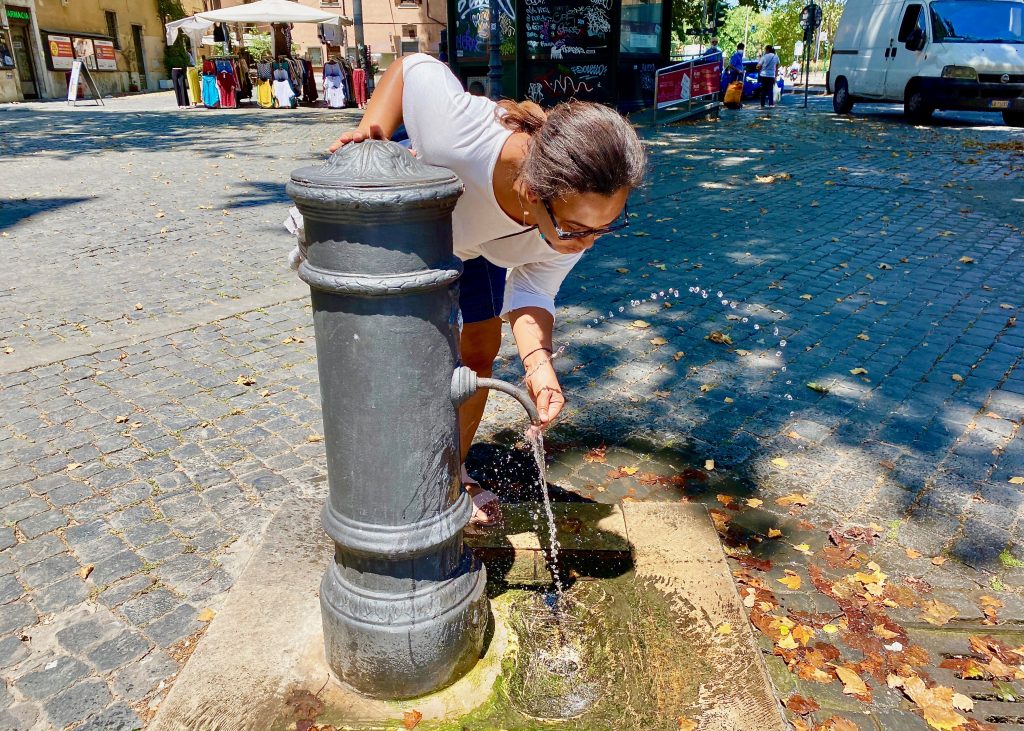
1. Hydration Hack: Rome’s Nasoni Fountains
Rome boasts over 1,500 nasoni—public fountains that provide fresh, free drinking water.
- Why It Matters: Exploring Rome involves a lot of walking, and staying hydrated is essential, especially during the summer months.
- What to Do: Carry a reusable water bottle and refill it at these fountains scattered across the city. Look for the iconic cast-iron spouts; the water is cold, clean, and environmentally friendly.
2. Early Starts: Beat the Crowds
Rome’s major attractions, like the Colosseum and Vatican Museums, attract thousands of visitors daily.
- The Advantage: Arriving early not only allows you to enjoy these sites without large crowds but also offers cooler temperatures, making the experience more comfortable.
- Pro Tip: Plan to visit popular landmarks as soon as they open (usually around 8:30 AM) and save leisurely activities, like wandering through piazzas, for the afternoon.
3. Timing Meals: When in Rome, Eat as Romans Do
Dining in Rome follows a unique rhythm that might be unfamiliar to first-time visitors.
- Dinner Hours: Italians typically eat dinner late, around 8–9 PM, and restaurants often don’t start serving before 7 PM.
- What to Do if Hungry Earlier: Try aperitivo, a delightful Italian tradition of pre-dinner drinks paired with light snacks like olives, bruschetta, or charcuterie. Many bars in neighborhoods like Trastevere or Testaccio offer this around 6 PM.
- Lunch Tip: Lunch is a bigger affair in Rome, usually served from 12:30 to 2:30 PM. This is the perfect time to indulge in a sit-down meal, as many locals do.
4. Be Ready for the Pace: Embrace the Chaos
Rome is a city of contrasts—ancient ruins stand alongside modern chaos, and the energy of the streets can be both exhilarating and overwhelming.
- Traffic and Noise: From roaring scooters to bustling markets, Rome is alive with activity. Take it in stride and enjoy the vibrant atmosphere—it’s all part of the Roman experience.
- Navigating Crowds: Major tourist spots can feel hectic. Stay patient, keep your belongings secure, and savor the quieter moments when exploring hidden corners of the city.
- Rest When Needed: Don’t hesitate to take breaks at charming piazzas or cozy cafes to recharge and soak in the ambiance.
5. Dress for Success: Respect the Culture and Comfort
- Dress Code: Many religious sites, including St. Peter’s Basilica and the Sistine Chapel, require modest clothing—no bare shoulders or short skirts. Bring a scarf or shawl for cover.
- Footwear: Cobblestone streets demand comfortable, sturdy walking shoes to avoid discomfort during long days of sightseeing.
6. Use Public Transport Smartly
Rome’s public transport system (metro, buses, and trams) can save time and energy.
- Pro Tip: Validate your ticket before boarding buses or trams to avoid fines. Apps like MyCicero and Moovit help with navigation.
Rome is a city of endless surprises and charms, and being prepared will help you focus on enjoying its wonders. By following these tips, your first Roman holiday can become a truly unforgettable experience!
✨ Insider Tips for Visiting Rome
Rome, a city of timeless allure and rich cultural heritage, rewards visitors who plan thoughtfully and are willing to step beyond the beaten path. Here’s how to make the most of your Roman adventure with practical advice and lesser-known tips that will enhance your experience and save valuable time.
1. Skip-the-Line Tickets: Your Time is Precious
Rome’s iconic landmarks attract millions of visitors annually, often resulting in long queues.
- Why It Matters: Avoiding the lines at places like the Vatican Museums, Colosseum, and St. Peter’s Basilica can save you hours, especially during peak tourist seasons.
- How to Do It: Pre-purchase timed-entry tickets or book guided tours that offer fast-track access. For a more exclusive experience, consider early morning or evening tours when the crowds are thinner.
2. Explore Rome’s Local Markets: A Food Lover’s Dream
Immerse yourself in Roman culture by exploring its bustling markets, where locals shop for fresh produce, artisanal products, and regional delicacies.
- Campo de’ Fiori: Famous for its colorful stalls offering fresh fruits, vegetables, and flowers by day. In the evening, the area transforms into a lively spot for dining and drinks.
- Testaccio Market: Located in Rome’s foodie district, this market is ideal for sampling authentic street food like supplì (fried rice balls) and indulging in fresh-made pasta or Roman cheeses.
- Porta Portese Flea Market: While not strictly food-focused, this Sunday market is a treasure trove of vintage finds and unique souvenirs.
3. Discover Hidden Gems Beyond the Tourist Trail
While landmarks like the Colosseum and Trevi Fountain are iconic, Rome’s hidden treasures offer a deeper connection to the city’s history and charm.
- The Appian Way (Via Appia Antica): One of the oldest Roman roads, this serene pathway is perfect for a peaceful walk or bike ride. Along the way, discover ancient tombs, aqueducts, and catacombs.
- Basilica di San Clemente: A fascinating multi-layered church that reveals centuries of Roman history, from early Christian mosaics to ancient pagan temples.
- Janiculum Hill (Gianicolo): Escape the hustle and bustle to enjoy panoramic views of the city, particularly breathtaking at sunset.
4. Navigating Public Transport: A Practical Guide
Rome’s public transport system, comprising buses, trams, and the metro, is efficient and budget-friendly, but it has its quirks.
- Metro: With only three lines (A, B, and C), the metro system is limited but useful for accessing major sites like the Vatican, Spanish Steps, and Termini Station.
- Buses and Trams: These cover areas the metro doesn’t, but be prepared for occasional delays. Apps like Moovit or Google Maps can help you navigate routes and schedules.
- Top Tip: Purchase a multi-day transport pass (Roma Pass or Metrebus cards) for unlimited travel on buses, trams, and metro lines, and validate your ticket upon boarding to avoid fines.
5. Embrace the Roman Way of Life
Rome’s charm lies not only in its landmarks but in its rhythms.
- Slow Down: Take time to savor a caffè at a local bar, people-watch in piazzas, or stroll through cobblestone streets without a set itinerary.
- Evening Strolls: Known as la passeggiata, this Italian tradition of an evening walk is a delightful way to explore neighborhoods like Trastevere or the historic center after dark.
- Stay Hydrated: Carry a reusable water bottle to fill at Rome’s iconic nasoni fountains, which provide free, drinkable water throughout the city.
Bonus Tip: Plan for the Unexpected
Rome’s streets can be unpredictable, with surprise closures, transport strikes, or pop-up events. Stay flexible, embrace the unexpected, and remember that some of the best experiences come from unplanned adventures!
Conclusion
Rome is a city for every season, offering a unique charm no matter when you visit. Spring’s mild weather and blooming gardens, summer’s lively festivals, autumn’s golden hues, and winter’s festive calm each bring a distinct experience to the Eternal City.
Whether you’re drawn to its rich history, vibrant culture, or world-renowned cuisine, careful planning and consideration of the seasonal nuances will make your Roman holiday unforgettable.
Also Read This:
- Things To Do in Barcelona Bound: A Local’s Guide to the Best Things to Do
- Unforgettable Things to Do in Japan: Discovering the Land of the Rising Sun
- Japan Itinerary Two Weeks: Explore, Embrace, and Experience the Land of the Rising Sun
- 4 Day Barcelona Itinerary: Immerse Yourself in Culture and History
- 3 Day Rome Itinerary: Experience, Explore, and Embrace the Eternal City
- Best Time to Visit Barcelona: Ultimate Guide to Exploring Spain’s Vibrant City

